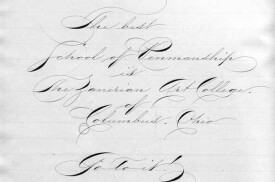斯賓塞體
斯賓塞體
斯賓塞體(Spenserian stanza )每詩節九行,詩格數不限;前八行是抑揚格五音步(十音節),第九行是抑揚格六音步(十二音節)。這最後一行又稱為亞歷山大詩行,因十二世紀末的法文長詩《亞歷山大傳奇》(Roman d’ Alexandre)的詩行都是十二個音節,因而得名。斯賓塞體的韻式為ababbcbcc,個別的韻式為ababbabaa。斯賓塞體是英國詩歌歷史上的重要詩體。文藝復興時期的著名詩人埃德蒙‧斯賓塞(Edmund Spenser) 在其代表作《仙后》(The Faerie Queene)中首先使用這種詩體,遂以他的名字命名。
一是前八行中的連鎖韻(interlocking rhyme) b韻,把兩個四 行緊密連結在一起,故增加了全詩的整體感和緊湊性。
二是第九行的亞歷山大詩 行使整個詩節顯得莊重,往往是全節內容的重點,或是前八行的總結和概括,它有時更以警句形式出現,使結尾更有力量。在形式上,它也增加了詩節韻律的變化,尤其在長敘事詩中效果更明確。第八、九兩行是雙韻,這樣,把最後一行與前八行聯接起來,便形成一個有機整體。
十八世紀有不少詩人模仿斯賓塞體,但都不十分成功。這種詩體的敘事功能在十九世紀始得到充分認識和發揮。浪漫主義詩人拜倫的成名之作《恰爾德‧哈羅爾德遊記》(Childe Harold’s Pilgrimage),雪萊的長詩《伊斯蘭的起義》(The Revolt of Islam)、《阿童尼》(Adonais),濟慈的《聖愛格尼斯節前夜》(The Eve of St. Agnes),等都是斯賓塞體。由於斯賓塞在詩藝上的重大貢獻和深遠影響,後人因此稱他為“詩人中的詩人”。
愛德蒙‧斯賓塞(Edmund Spenser , 1552-1599)
The Faerie Queene
Qanto 1 (Excerpt)
1
A Gentle Knight was pricking on the plaine ,
Ycladd in mightie armes and silver shielde ,
Wherein old dints of deepe wounds did remaine ,
The curell markes of many a bloudy fielde ;
Yet armes till that time did he never wield :
His angry steede did chide his foming bitt ,
As much disdayning to the curbe to yield :
Full jolly knight he seemd , and faire did sitt ,
As one for knightly giusts and fierce encounters fitt .
仙后
第一卷(節選)
1
高貴的騎士在平原上策馬馳騁,
挎著鋒利的刀槍和銀光閃爍的盾牌,
盾上深深的刀痕是歷史的見證,
永不讓人忘記多次浴血沙場的殘酷歷程;
但騎士卻是第一次披甲掛帥。
他的烈馬憤怒地責怪著韁繩,
像是說決不屈從於羈絆的窒礙。
快樂的騎士在馬上英姿颯爽,
善於比武,也能在戰場與敵人激烈交鋒。
例詩第一節格律分析如下:
A Gen│tle Knight│ was prick│ing on│ the plaine ,│
Ycladd│ in│ might│tie armes│ and sil│ver shielde ,│
Wherein │old dints │of deepe │wounds did │remaine ,│
The curell│ markes of│ many│ a bloud│y fielde ;│
Yet armes │till that │time did│ he nev│er wield :│
His an│gry steede │did chide│ his fo│ming bitt ,│
As much │disday│ning to │the curbe │to yield :│
Full jol│ly knight│ he seemd , │and faire│ did sitt ,│
As one │for knight│ly giusts │and fierce │encoun│ters fitt .│
例詩每節9行,前8行的韻律是抑揚格五音步,最後一行是抑揚格六音步,韻式為ababbcbcc。一些節奏的微妙變化也與詩意互有默契。如第一行第四音步是抑抑格,與後面的抑揚格相連,連續出現三個輕音節,故讀得輕、快,與戰馬馳騁的文意相符。第五行第三音步和第八行第一音步都是揚揚格,前者強調這次是騎士首次出征,後者強調騎士愉快大方的外貌。第四行中間的揚抑格,表現驚奇和揄揚。
